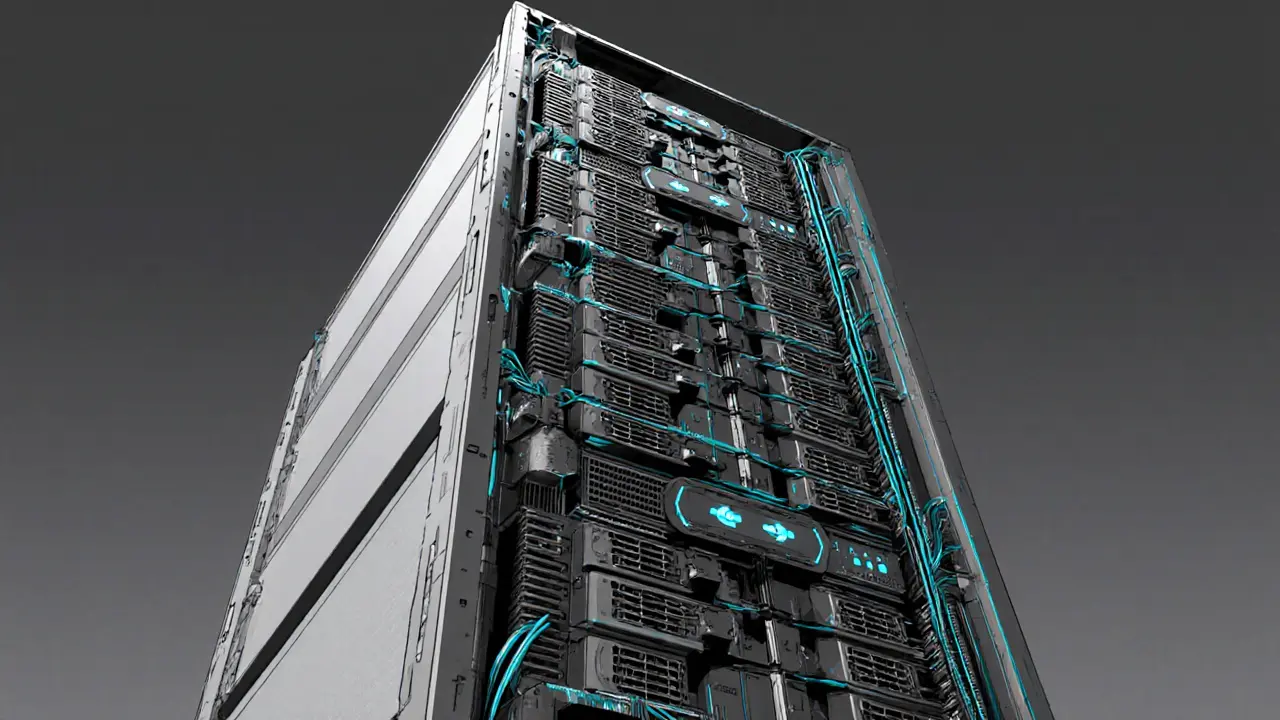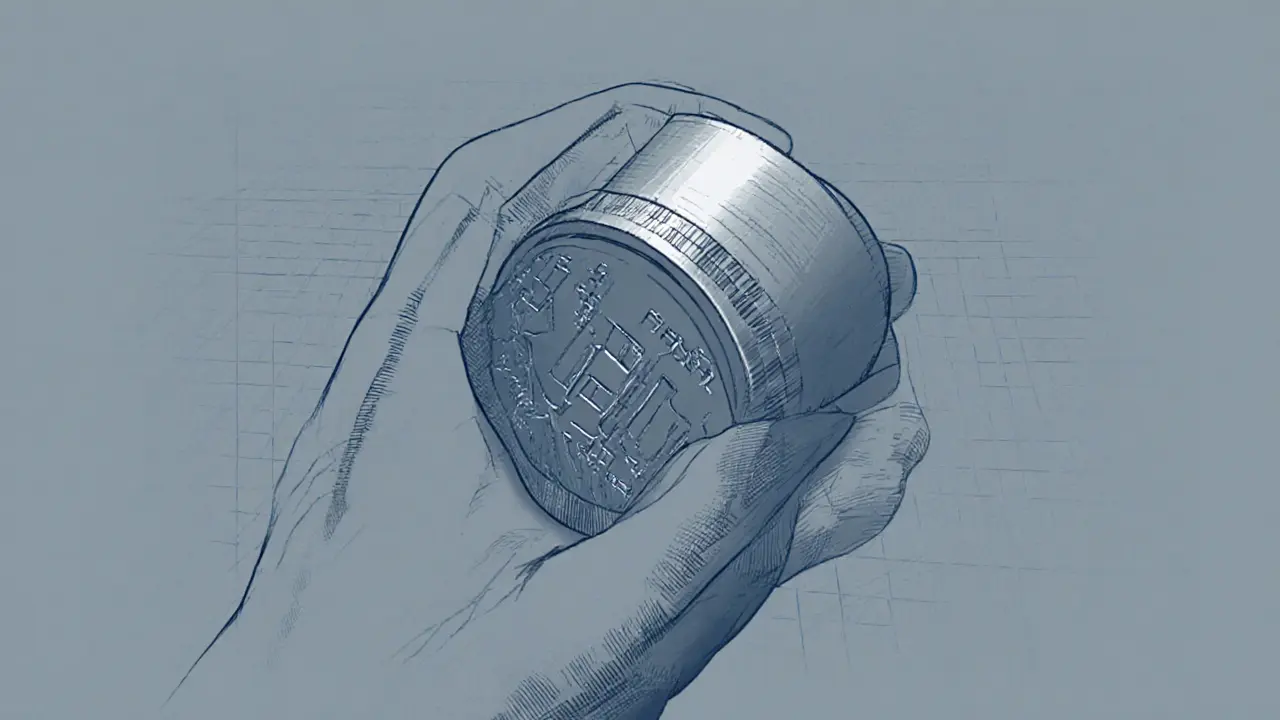Bitcoin Mining Difficulty Calculator
How It Works
Bitcoin adjusts difficulty every 2,016 blocks (~2 weeks) to maintain a target block time of 10 minutes.
The formula used is: New Difficulty = Old Difficulty × (Actual Time / 14 Days)
Adjustment is capped to prevent drastic changes in a single update.
Bitcoin is a decentralized digital currency that runs on a peer‑to‑peer network without any central authority. Since its launch in 2009, Bitcoin has relied on a single consensus method called Proof of Work to keep the ledger honest, pay miners, and decide which transactions get written next. If you’ve ever wondered why miners keep computers humming 24/7, or how a network of strangers can agree on a single history, this guide breaks it all down in plain English.
Key Takeaways
- Proof of Work requires miners to find a hash below a dynamic target using the SHA‑256 algorithm.
- The network automatically adjusts difficulty every 2,016 blocks to keep the average block time at ~10 minutes.
- Mining rewards consist of newly minted bitcoins plus transaction fees, both paid only after the block is validated by the network.
- Solo mining is possible but most participants join pools to smooth out earnings.
- Compared with Proof of Stake, PoW offers unmatched security at the cost of high energy use.
What Is Proof of Work?
Proof of Work is a consensus algorithm that forces participants to perform a measurable amount of computational effort before they can add a new block to the blockchain. In Bitcoin’s case, the effort takes the form of repeatedly hashing block data until the resulting number is lower than the current target. The first miner to hit that target announces the solution, and the rest of the network checks the work before accepting the block.
How SHA‑256 Powers the Puzzle
Bitcoin’s PoW is built on the SHA‑256 cryptographic hash function. SHA‑256 takes any input and produces a 256‑bit output that looks random. The magic is that even a tiny change in the input completely changes the output, making it impossible to predict which input will yield a low‑value hash.
The mining puzzle can be expressed as: find a nonce-a 32‑bit number-such that
SHA256(SHA256(BlockHeader || nonce)) < Targetwhere
BlockHeader contains the previous block’s hash, a Merkle root of selected transactions, a timestamp, and the current difficulty bits. Because the hash function is deterministic, miners can test billions of nonces per second, but they have no shortcut to the solution.
The Mining Process Step by Step
- Collect Transactions. Nodes broadcast new transactions to the network. Each miner pulls unconfirmed transactions from the mempool and orders them, usually by fee rate.
- Build a Candidate Block. The miner assembles a block header, calculates the Merkle root of the chosen transactions, and adds its own payout address (the coinbase output) to claim the reward.
- Run the Hash Loop. Using specialized hardware (ASICs), the miner varies the nonce and re‑hashes the header millions of times per second, looking for a hash below the target.
- Found a Valid Nonce. When a miner finally hits the target, it instantly broadcasts the full block (header + transactions) to its peers.
- Network Verification. Other nodes recompute the hash, verify the transactions, and confirm that the nonce satisfies the current difficulty. If everything checks out, they add the block to their copy of the chain.
- Reward Distribution. The winning miner receives the block reward (currently 6.25BTC) plus any transaction fees included in the block. The reward is locked for 100 blocks before it can be spent, a safety measure against chain reorganizations.
This cycle repeats roughly every ten minutes, keeping the blockchain continuously growing.

Difficulty Adjustment - Why It Matters
The Bitcoin protocol retargets difficulty every 2,016 blocks-about every two weeks. It measures how long the previous 2,016 blocks actually took to find and compares that to the ideal 10‑minute target. If blocks were found too quickly, the target is lowered (making hashes harder). If they were too slow, the target rises (making hashes easier). This self‑balancing act guarantees a stable block time regardless of how much hash power joins or leaves the network.
Formula (simplified):
NewTarget = OldTarget × (ActualTime / 14days)
With a cap that prevents the difficulty from changing by more than a factor of four in a single adjustment, the network stays resilient to sudden hash‑rate spikes.
Mining Pools vs Solo Mining
Solo mining means you keep the entire block reward, but the odds of finding a block on your own are astronomically low unless you control a sizable fraction of the total hash rate. Most miners join a mining pool, a collaborative system where participants share their hash power and split rewards proportionally.
Pool payouts typically follow one of two models:
- Pay‑Per‑Share (PPS): Miners receive a fixed amount for each valid share they submit, regardless of whether the pool actually finds a block.
- Proportional (PROP): Rewards are distributed based on the number of shares submitted during the round that ends with a found block.
Pools smooth income, making mining cash‑flow predictable-a major advantage for hobbyists and small operations.
Proof of Work vs Proof of Stake (Comparison)
| Aspect | Proof of Work (Bitcoin) | Proof of Stake (Typical) |
|---|---|---|
| Security Model | Relies on computational work and energy expenditure | Relies on economic stake and slashing penalties |
| Energy Use | High - trillions of hashes per second | Low - minimal computation needed |
| Decentralization | Potentially higher, but large farms can concentrate hash power | Depends on token distribution; large holders can dominate |
| Attack Cost | Cost of acquiring & operating ASICs + electricity | Cost of buying >50% of total stake |
| Reward Structure | Block subsidy + transaction fees | Transaction fees; no block subsidy after launch |
| Finality | Probabilistic - deeper confirmations increase certainty | Often deterministic - once a block is finalized it cannot be reverted |
Both mechanisms aim to achieve consensus, but Bitcoin’s choice of PoW reflects a preference for proven security over energy efficiency.
Common Pitfalls & Tips for New Miners
- Underestimate Electricity Costs. Even the most efficient ASICs consume significant power. Calculate your local rates before buying hardware.
- Ignore Heat Management. Poor cooling reduces hardware lifespan and can cause throttling.
- Pick the Wrong Pool. Look for low fees, reliable payout history, and geographic latency.
- Forget Firmware Updates. ASIC manufacturers release performance tweaks that can add a few percent hash rate.
- Don’t Over‑Invest Too Soon. Start with a modest rig, understand the economics, then scale up.
By keeping these factors in check, you avoid the most common reasons miners quit early.
Frequently Asked Questions
Why does Bitcoin need a 10‑minute block time?
Ten minutes is a sweet spot between fast transaction confirmation and the ability of a worldwide network to propagate new blocks reliably. Shorter times would increase the chance of forks, while longer times would make the network feel sluggish.
What is a nonce and why is it important?
The nonce is a 32‑bit field that miners change for each hash attempt. By tweaking the nonce, miners explore the vast space of possible hashes until one meets the difficulty target.
Can I mine Bitcoin with a regular PC?
Not profitably. Modern Bitcoin mining is dominated by ASICs that are orders of magnitude faster than CPUs or GPUs. A PC would waste electricity without a realistic chance of earning rewards.
How does the difficulty adjustment keep block times stable?
Every 2,016 blocks the protocol looks at how long the last set actually took. If miners were faster, the target is lowered, making the puzzle harder; if they were slower, the target rises. This feedback loop averages out to ~10 minutes per block.
What happens to the block reward over time?
The reward halves roughly every four years in an event called the "halving." It started at 50BTC, dropped to 25, then 12.5, and is now 6.25BTC. The next halving, expected in 2024, will cut it to 3.125BTC, further reducing the supply inflow.
Understanding the inner workings of Bitcoin’s Proof of Work gives you a clearer picture of why the network has stayed secure for over a decade. Whether you’re a curious investor, a developer sketching a new app, or a hobbyist thinking about mining, the concepts above form the backbone of the system that powers the world’s first cryptocurrency.
Bitcoin mining may look like a high‑tech arms race, but at its core it’s just a math puzzle that anyone can verify. The combination of cryptographic hashes, dynamic difficulty, and transparent rewards creates a trust‑less ledger that can’t be easily tampered with-exactly what Satoshi Nakamoto set out to achieve.

